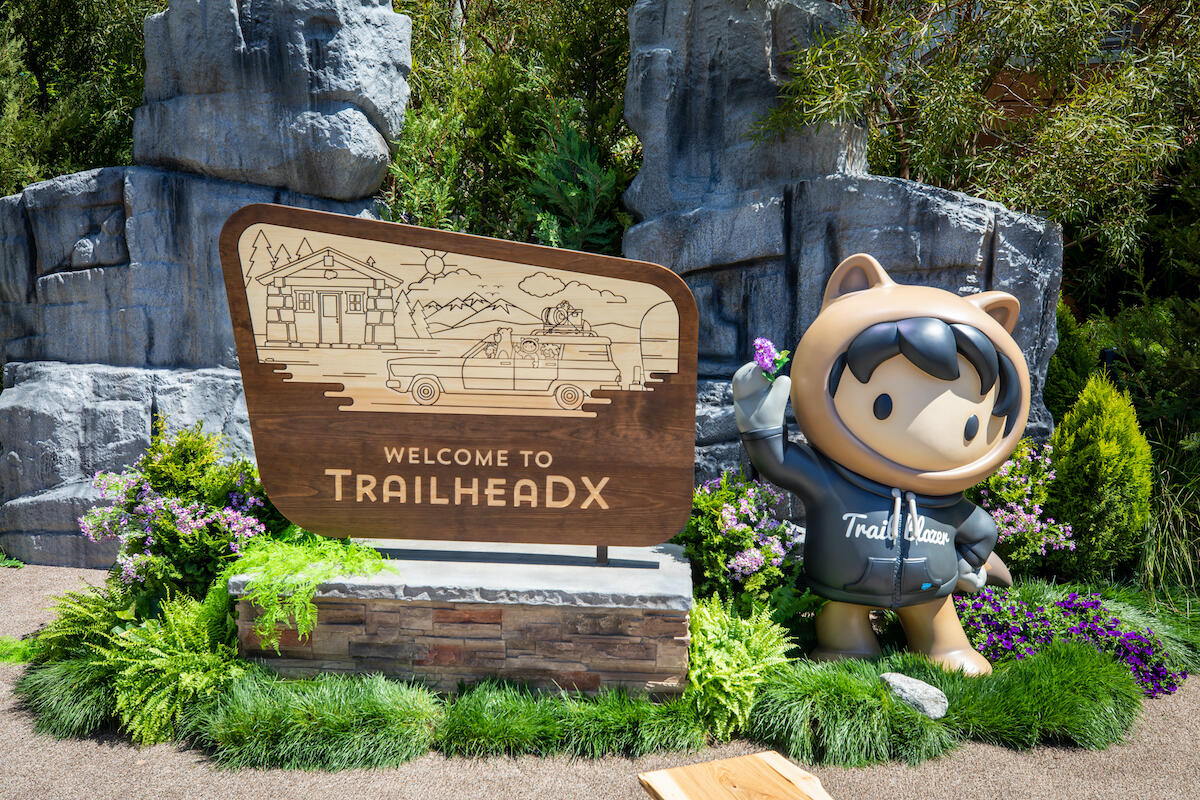Salesforce TrailheaDX 2021: One big reason why non-developers and devs should tune in
Salesforce CTO and co-founder Parker Harris reveals the big theme’s for TDX 2021 and what’s next for the future of business software development.
Salesforce TrailheaDX (TDX), the company’s annual gathering for developers, admins, architects and partners, starts this Wednesday, June 23 at 8:45 a.m. PT | 11:45 a.m. ET.
Like TDX 2020, TDX 2021 is an all-digital, multi-day event that will combine both live and on-demand content. There will be keynotes, product demos, expert-led Q&A sessions, and a host of other activities. Actress, producer/director and author Mindy Kaling will kick things off with a pre-show session, followed immediately by the opening keynote headlined by Salesforce CTO and co-founder Parker Harris. Fitz and the Tantrums will also perform…giving the event a more in-person tech conference feel.
But it’s not the celebrity appearances or musical guests that make this year’s TDX stand out among developer and coding events.
First, it’s how Salesforce focuses on the “people who deploy, support, and develop on their platforms” (called Trailblazers) that makes TDX special. The attendees (virtual or in-person) are the true stars of TDX, and Salesforce takes every opportunity to highlight their stories from the opening keynote to the last session.
Second, it’s how this year’s TDX marks a renewed focus on the “clicks not code” philosophy that Salesforce was founded on. And it’s for this reason, that non-developers, IT professionals and business leaders even if they don’t work on or use Salesforce products should tune in to TDX or at least watch a replay of the keynote.
During a pre-show conversation with Harris, I asked him about the big theme’s for this year’s event, how Salesforce is betting big on its platform, and what’s next for the future of software development as more companies expand their use of no-code and low-code tools.
“Well, the big theme of this conference is all about low-code,” Harris told me. “And, the thing that excites me is we started with a low-code platform in 1999. We knew that our customers needed to take our service and make it their own, but they needed to do that quickly and easily. And we needed to do it with one set of software that my developers create.”
SEE: The CIO’s guide to low-code platforms (TechRepublic Premium)
And it was the low-code and no-code’s effect on the future of software development that was THE consistent thread throughout our conversation.
“Because, business is moving faster than ever. Everyone’s gone digital and you need low-code platforms to bring that together,” Harris said.
Indeed, TDX 2021 is a showcase for how technologies like the cloud, low-code and AI are reshaping the entire process of business software development. As Harris describes it, “developers” are being moved closer to the business problems they are trying to solve, and more people within the organization are being empowered to work on and solve those same problems. Gone are the days when a company could wait months for their IT department or engineering shop to create every application or automate every process.
“And that’s why so many businesses are seeing that agility, not just from their ‘developers,’ but the business user who knows exactly the problem he or she wants to solve,” Harris said. “They’re empowered to innovate themselves, and they’re doing it quickly with low-code.”
A special Dynamic Developer interview with Parker Harris about TrailheaDX 2021 and low-code
The following is a transcript of my conversation with Harris about TrailheaDX 2021 edited for readability. The video is embedded above and you can listen to the interview on TechRepublic’s Dynamic Developer podcast.
Bill Detwiler: So after 22 years, as co-founder and CTO of Salesforce, what’s changed the most during that time, especially to drive the software industry forward? Because, I know we’re here to talk about TDX, but I’d love to start there with that personal perspective for someone that’s been in this business for so long.
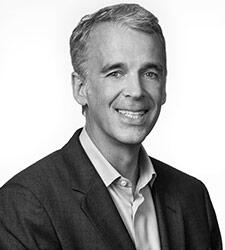
Parker Harris, Salesforce CTO and co-founder
Image: Salesforce
Parker Harris: Yeah. Well, Bill, everything’s changed. You know what I mean? Thinking about it, the new operating system is the cloud. If you think, when we started the company, AWS didn’t exist, Adder doesn’t exist. GCP doesn’t exist. Now people write code and they put it in the cloud. Social didn’t exist. Facebook didn’t exist. Twitter didn’t exist. The phone didn’t exist. I mean, we talked about being mobile, long time ago, but the smartphone didn’t exist. AI certainly existed, but it didn’t really work at scale until these hyperscalers came out and you could throw a lot of compute at it. And all of a sudden with all the data we have today and all of the compute, machine learning is working amazingly well and it’s everywhere. It’s in all of our devices. It’s in all of our interactions with the web and you don’t even know it’s there. And so in a way, the technology world, the platform we started with, in ’99, everything’s changed since then. And Salesforce has evolved along with it.
TrailheaDX 2021 is “all about low-code”
Bill Detwiler: And that seems to be the watchword these days is platform. So let’s use that as the segue to talk about this year’s TrailheaDX event. What’s coming up and what are going to be the major themes?
Parker Harris: Well, the big theme of this conference is all about low-code. And, the thing that excites me is we started with a low-code platform in 1999. We knew that our customers needed to take our service and make it their own, but they needed to do that quickly and easily. And we needed to do it with one set of software that my developers create. And so we did that with a metadata-driven platform meaning, Bill, you describe to us with a description, you want the UI to do this. You want the data model to be this way. You want your workflow to be this way and you just describe it and you do it with clicks, not code.
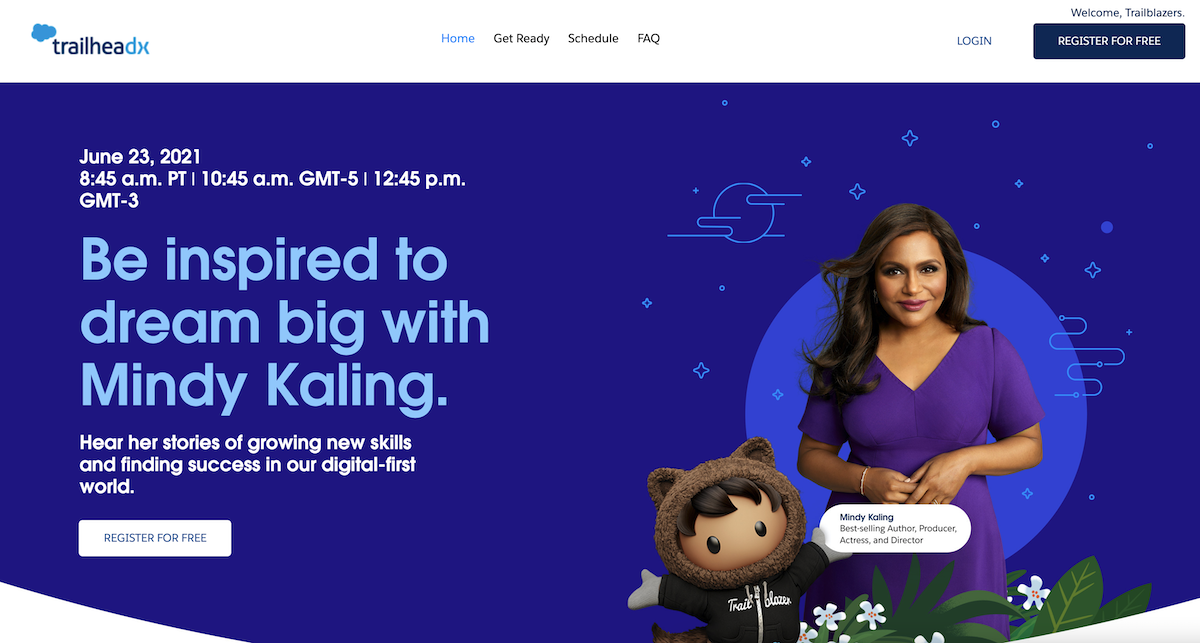
And so, what we’re seeing is everyone in a corporation is now empowered to innovate and they’re empowered to innovate … We’re doing this interview, and we’re all at our home still. You know what I mean? Definitely, some people are back to work, back in the office, but this has been a total transformation where everyone’s gone digital from their homes. And so it’s about innovating from anywhere. It’s about taking that low-code and automating from anywhere. And because everyone’s gone digital, and everyone said like, “I need to sell from my home. I need to service from my home.” E-commerce is on fire. Marketing’s on fire. We need to do that at B2C scale, because everyone’s going digital. It’s black Friday for everyone all the time. And so it’s about scaling, and it’s about teaching all of these people in your corporation and empowering them to take that, those low-code tools and be successful. To be creators in their corporation and to innovate for their customers.
Automating business workflows with “point and click” and “drag and drop”
Bill Detwiler: And I think that’s really unique about Salesforce is origin, which is clicks not code. And I’d love to hear you kind of expand on the journey from there to where we are now. Over the last 20 years, you’ve been talking about the platform and talking about the emphasis on low-code and no-code. How has the platform evolved over the last 20 years to do exactly what you say, which is to speed digital transformation, to bring value, to help customers, your customers, connect with their customers?
Parker Harris: Well, when you think about where we started, we allowed you to go and change the data model in the UI, and we allowed you to add fields to the screen. But when you think about the demands now on user experience, we have our point and click, drag and drop interface builder in Lightning Builder, that lets you configure your screen exactly like you want. And a low-code developer can do that in a matter of minutes. They don’t have to write a lot of code to go do that. You want to automate the workflows in your business. And, you don’t need to do that by cracking open your editor and writing in a lot of code. You can do that with Flow, where you can take our workflow engine and do it with just pointing and clicking in a visual, next step do this.
So, and having conditional statements, but it’s very easy. You don’t have to understand I need an if, then, with a bracket here. You just go and look at your browser and you click. We have gone to Hyperforce. So as you do all of this automation, as you configure your use of our service with low-code, you can deploy it anywhere because of Hyperforce. We can now deploy that workload in the United States, in Europe, in France, in Brazil. Wherever you need us to work, we will work for you. So, a huge … Those hyperscalers, as we said earlier, it didn’t exist when we started the company. But everyone’s moving to the cloud. Salesforce is moving its workloads to these hyperscalers so that we can give you the power of local data, residency of scale.
And, it’s just incredible, there’s some innovations. I can’t tell you all of the innovations that are coming next. You’ve got a few quick announcements coming out of TDX, and I hope that you tune in, but there’s also some really good partnerships we’re going to announce. There’s some new tools that we’re going to announce, and some great customer stories that will come out at TDX.
SEE: Low-code platforms: An insider’s guide (free PDF) (TechRepublic Premium)
Salesforce looking forward: A platform that helps customers move at the “speed of digital”
Bill Detwiler: Well, so let’s talk about the future a little bit. Where do you see and how do you see the platform evolving, maybe in the next two to five years?
Parker Harris: Yeah. Well, one of the things that, my entire career, frankly, has been in the Salesforce automation and CRM space, except for a short stint. I did some accounting software. But even that, when you think about like, if you can take … I’ve seen CRM be redefined, pretty much every year for the past 22 years to encompass, I mean, everything is customer centric. If you think about your corporation, what are you in service of? You’re in service of your customers. And when I think about the Customer 360, you’ve seen us talk about it. And we started out with Salesforce automation. We had a customer service, market automation, e-commerce, collaborations, analytics, integration, all of these touchpoints are kicking off data. And when you think about, the world we’re in now, there’s an amazing amount of data.
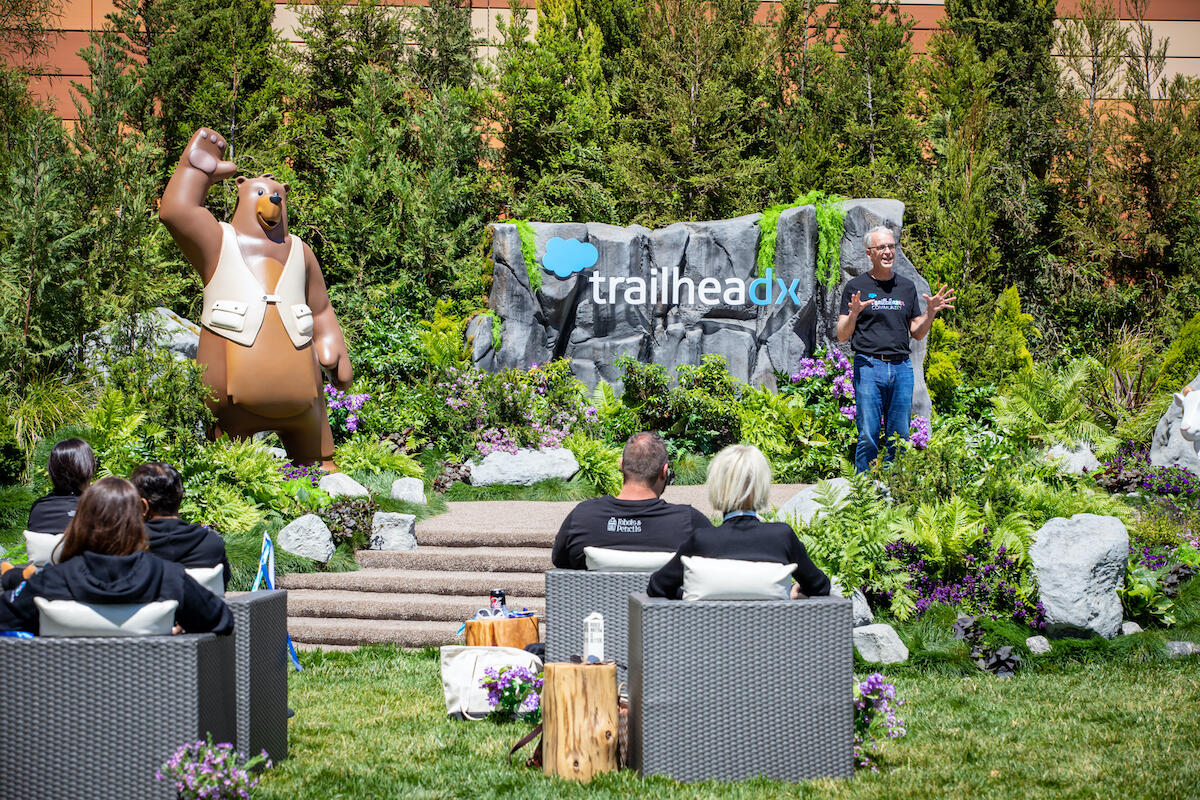
Parker Harris, Salesforce CTO and co-founder, at TrailheaDX 2021
Image: Salesforce
And everyone’s chasing that data. Corporations, I talk to CEOs all the time and they were like, “How do I manage all this data and make sense of it? In Tableau’s worlds, how do I see and understand that data?” So that’s the analytics of data. But what I’m so excited about is finishing that off. So as we collect all this data for you, and it’s your data, not ours. We protect it. We secure it. We manage your data, privacy, which is more and more important in this world. And we bring it together. We also let you activate it. So let’s say that Bill, you’re coming into my website, or you open a mobile app. What are you doing now? We are not only bringing together data in a batch-oriented way and creating data lakes for you. We’re activating in real-time.
And, it’s the speed of digital, it’s the speed of today where you want to activate that data so that when you come into the website, I want to give you a product recommendation that is specific to you. As like if you’re on Amazon, how do I give you an Amazon-like experience for your e-commerce? How do I give you a customer service experience that it’s like, “Wow, this is seamless. You know me and you know my problem, and you’re fixing it right away.” You need to close that loop. And so what I’m so excited about is the Customer 360 and really making that even better, even more real-time, and even more personalized, powered by the AI, and allowing you to work on any device anywhere. That’s what I’m so excited about. And, it’s a dream I’ve had for 22 years. I’m starting to really see a lot of that come together to fruition. And I just can’t wait to activate that in each of our customers.
Today’s low-code tools and customizable platform come from two decades of listening to Salesforce customers
Bill Detwiler: Well, I think that’s a great segue to my next question, which is, hindsight’s always 20/20. I mean, but you alluded to this earlier. When Salesforce started, there were no cloud services, the cloud wasn’t really a thing. There was no Azure, no GCP, no AWS. So this discussion of building a platform and having it evolve, and then looking at that, going into the future, it seems like a foregone conclusion. But that was not the case back then. It didn’t have to turn out this way. It just did. So it was a huge bet that Salesforce made back then on the platform and being, focusing on becoming a platform company. Tell me a little bit about that decision, because that was a very good, insightful decision.
Parker Harris: Yeah. Well, Bill, it started with just simply, we have a vision of, instead of shipping software … I don’t know if you remember a long time ago, we had the no software logo. And, the people who are technical would come to me and say, “Parker, I know you’re writing software.” And I would say to them, “This is marketing. This is about certainly we’re writing software, but I’m not going to give it to you.” I’m not going to hand you a CD and say, Bill, here’s some amazing software. Here’s the CD, good luck. And by the way, you need to buy a computer to put that in CD in. You need to hire some people to go, manage that computer and install the software and manage it, and make sure it’s working. So that was our vision when we started. But, when we thought about, we need to run the software for you, we need to run the software for everyone.
And when you run the software for everyone, how do you scale that? How do you manage a company who’s going to do that? You need to have a platform. You need to be able to have essentially one runtime engine, one platform that then lets Bill run his service. And he’s in the media space. Okay, great. You have information you’re tracking and media, you have certain workflows that are specific to your industry. You have certain user experience needs, but that’s different than high tech. It’s different than financial services. It’s different than healthcare. They’re all different. And each business in those industry verticals is also very specific. So, how do you make it specific to yourself and how do we continue to give you innovation three times a year, seamless upgrades? How do we do that? We do that with our platform.
And so we started simply, we just said, “All right, we’re going to let you change some basic things in our service.” And then we listened to our customers. And then we had one of our customers come in … Sorry, I’m going to turn off my notifications. We had one of our customers come in, and one of our customers was in the healthcare business. And that customer was called Patient Care. And we had these tabs when we invented Salesforce, because we looked at Amazon and we said, “Okay, I’m going to think about a tab-based interface.” So we had accounts instead of CDs. We had contacts instead of books. And so we said to Patient Care, “Hey, here’s your interface.” And Patient Care said, “But I don’t have accounts. I have hospitals.” And they said, “I don’t have contacts. I have patients.”
And so we said, “Well, just tell your users to think about, you know, the account as a hospital.” But Marc Benioff said, “No, I hear you, and we’re going to let you change the names of your tabs. We’re going to let you say, it’s not an account. It’s a hospital. It’s not a contact, it’s a patient.” And so we kept listening to our customers. So we allowed you to change the names of tabs. We allowed you to then create your own objects or tables in our services to track information that you wanted. We allowed you to do more with workflow, more of user experience. And the platform just evolved out of listening to our customers and what they needed.
And yes, it was a great decision a long time ago. I would say that the most important thing is it’s been guided by listening to our customers. And what our customer is stating today is, they need the speed and agility of a low code platform. That’s why we have the best low-code platform on the planet. And that’s why so many businesses are seeing that agility, not just from their “developers,” but the business user who knows exactly the problem he or she wants to solve. It doesn’t have to translate that somehow to an IT department or a developer shop to go build something. And then, three months later, they get a solution. They’re getting it right away and they’re doing it themselves. They’re empowered to innovate themselves and they’re doing it quickly with low-code.
SEE:
Low-code development is helping businesses adapt to the ‘double whammy’ of Brexit and COVID
(TechRepublic)
Empowering more people to solve business problems
Bill Detwiler: Well, I think that leads me to my next question, which really is all about low-code. And, a lot of IT leaders are planning to increase their use of low-code app development tools over the next few years. And Salesforce, low-code, no-code, isn’t new to Salesforce, but it feels like we’re kind of at a tipping point now within more customers. So, tell me a little bit about why now? Why is the low-code and no-code trend really taking off?
Parker Harris: Well, we’ve surveyed our customers and we found that 83% of IT leaders are planning to increase their use of low-code tools. What we’re finding is, there’s a telco that we’ve been working with that we said, “Look, we need to go fast with you. And, we’re going to do it with low-code, and we’re going to do it quickly.” And I think in this implementation, this is a massive telco, there’s only 200,000 lines of code. There’s very little code in that offering. And that’s because of low-code, that we’re able to do it quickly and easily. And what I love about low-code, this is what I get so excited about is, if you made a lot of code and then you need to enhance it, you’re going to have to have your developers go and write more code. If you use low-code, you’re taking advantage of our platform underneath it.
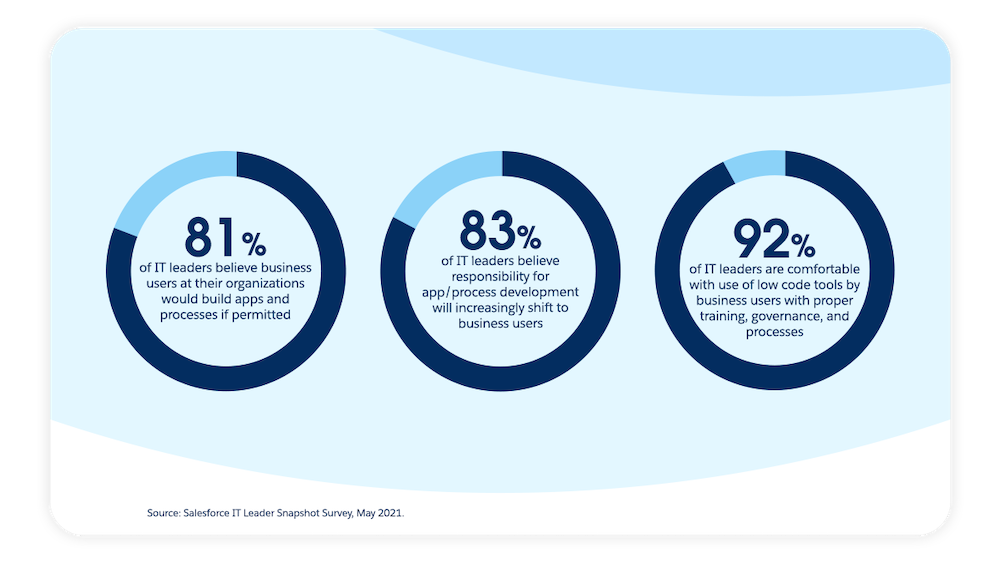
Salesforce IT Leader Snapshot Survey, May 2021
Image: Salesforce
I have thousands and thousands of developers on staff. And as we release new innovation, where we’re releasing new innovation right now, out to the world with our summer release, and you’re going to see some of that at TDX, all of that low-code that you’re doing takes advantage of that, of the innovation that we’re doing. And so it’s almost like a guarantee that you’re going to go quickly. Not just for that first bit of innovation, but that you can continue to innovate quickly. As new innovation happens, we give it to you and your low-code just gets better, and better, and better.
Bill Detwiler: And that leads me to kind of one of my last questions, which I think is a great place to end up since we’re talking about TrailheaDX, your developer event. Which is, everyone is really talking about going digital right now. Everybody has especially been on this digital transformation journey, that’s been accelerated as we were talking about with the pandemic, and everyone working remotely and the shift to a more hybrid work environment. And it really is developers that’s making that happen, both on the pro-code side and on the low-code and the no-code side. Right? So how is the role of the developer changing? How has it changed? How is it changing and how do you, as someone who’s been in this space as a technical person for so long, how do you see it changing in the future?
Parker Harris: Well, the thing I see changing the most is that the developer is getting closer and closer to the business problem, and the agility of solving it is closer and closer. The problem I see historically is, you would be given a business problem. You’d hand it off to some engineers. They would then translate that, they’d write some docs. “Is this what you want?” Then they’d write some code. And then like six months later, or a year later, they say, “Bill, here’s your solution.” And you go, “Well, that’s not what I wanted. And by the way, my business has changed in the year that I’ve been waiting for you to solve this problem.” And so what it’s about is shortening that cycle, and how do you bring the business problem and the solution closer and closer together, so you get the business agility?
Because, business is moving faster than ever. Everyone’s gone digital and you need low-code platforms to bring that together. And so, that’s what I’m so excited about, and it’s not even just the developer. Like that business user that has the problem, as we said earlier, might solve that herself, and that’s amazing. And, so it’s not about innovation in terms of how much code can I write and what did I build? It’s not about the technology. It’s about solving business problems. It’s about helping our customers connect with their customers and deliver better experience in their sales experience, and their service experience, and marketing experience, e-commerce. All of those touchpoints. And you want to do that quickly. You want to listen to your customers. Like I said, we built our platform, listening to our customers. Our customers are doing the same thing. We have given them the magic that we created with Salesforce. We put it in their hands with this low-code platform. And they’re able to have that same kind of agility, that customer-centricity, listening to their customers and the agility that you need in this new world.
Also see
For all the latest Technology News Click Here
For the latest news and updates, follow us on Google News.

